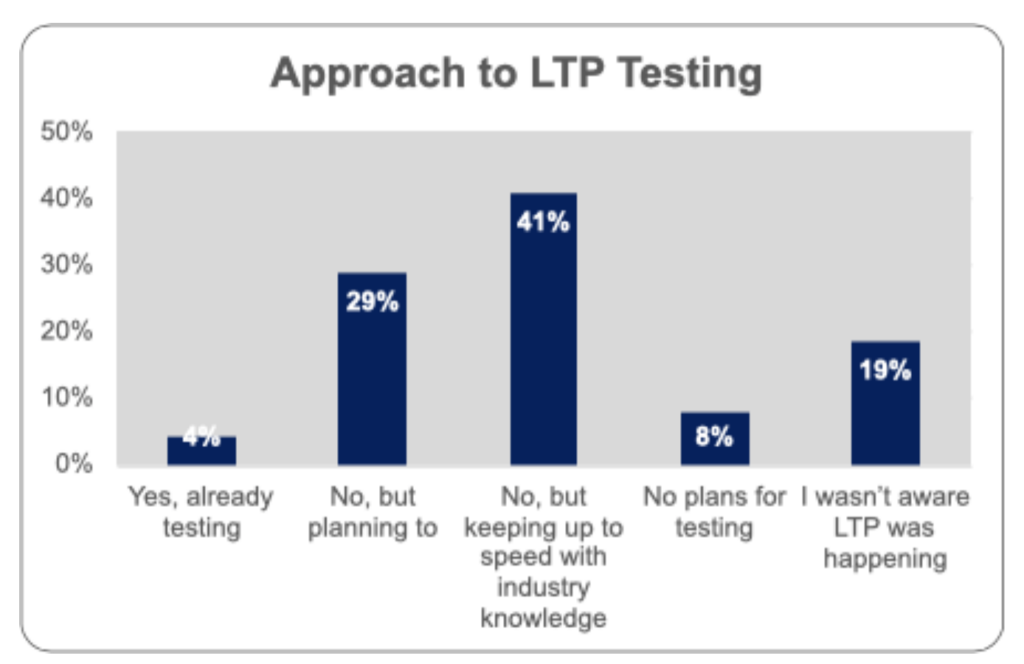Email Marketing
A Deep Dive into Apple’s Link Tracking Protection: Should Email Marketers Be Worried?
minute read

My Validity colleague Rafael Viana provided a heads-up on Apple’s latest privacy initiative in his recent blog post.
In our latest State of Email webinar, we did an even deeper dive into this important topic. This follow-up article provides expert insights into what’s happening and how email marketers need to respond.
Let’s take a look.
September 2021 flashback: Pixelgeddon!
To fully understand Apple’s intentions with the new policy, let’s take a look at their track record with consumer privacy.
Two years ago, Apple sent reverberations through the world of email marketing with Mail Privacy Protection (MPP). This caused open tracking pixels to fire automatically in many cases, regardless of whether subscribers had actually engaged with those emails.
It’s now estimated ± 80 percent of all open events are MPP-generated false positives.
This has impacted the longer-term ability of email marketers to accurately measure subscriber engagement. While some have moved to alternative metrics (mostly click-throughs) many still use opens, creating an over-optimistic view of how engaged these subscribers are.
As a result, Apple’s deliverability has collapsed.
While average global inbox placement rates (IPRs) are currently ± 86% Apple is only 68 percent (YTD) and 51 percent (MTD).
Apple Link Tracking Protection
With the release of iOS17 in September 2023, Apple has new plans to further protect customer privacy.
In their own words:
“Some websites add extra information to their URLs to track users across other websites. Now this information will be removed from the links users share in Messages and Mail, and the links will still work as expected. This information will also be removed from links in Safari Private Browsing.”
Apple shared an example of a URL before and after tracking parameters are removed.
- Before: https://example.com/ad_engagement?click_id=YmVhODI1MmzMNGU&campaign_id=23
- After: https://example.com/ad_engagement?campaign_id=23
The original URL has a unique “click_id” parameter that advertisers can use to track a user’s activity across websites. Safari automatically removes this parameter to protect the user’s privacy.
Until now, these parameters have been crucial to businesses for tracking user activity across websites and crafting personalized ads.
With this new feature, Apple is shaking up the traditional landscape of online advertising and analytics.
Should we be worried?
To answer this million-dollar question, let’s compare two of Apple’s other recent privacy-themed releases. App Tracking Transparency (April 2021) generated a load of news coverage, and MPP (six months later) was a big deal, with many email marketers predicting “pixelgeddon.” In contrast, LTP seems to have flown under the radar (so far!). We asked our State of Email webinar audience how they think about LTP.
It’s clear that most are taking a wait-and-see approach at the moment. Although, it was eye-opening to see one-fifth weren’t aware LTP was happening!
There hasn’t been much communication from email service providers yet, which is surprising.
Why is Apple doing this?
Apple has long made a virtue of protecting the privacy of its customers. When LTP was announced, Craig Federighi, their SVP of Software Engineering, commented:
“Privacy is designed into every new Apple product and feature from the beginning. We are focused on keeping our users in the driver’s seat when it comes to their data by continuing to provide industry-leading privacy features and the best data security in the world.”
Apple continues to be a leader in data and technology, and this is just another way for them to instill trust in their users that their privacy is protected.
Also, as legislation continues around the world where privacy is concerned, they are getting ahead of the game with this new feature.
On the surface, this appears to be a logical “next step” in Apple’s ongoing commitment to user privacy, following the rollout of App Tracking Transparency in iOS 14.5 and Mail Privacy Protection (MPP) in iOS 15. Apple is far from alone in this space, and Mozilla’s Firefox and Brave Software’s Brave browsers already allow users to block many of the same parameters.
Apple itself positions the marketing impact of LTP as an “unintended consequence” of their ongoing commitment to privacy, with the primary targets appearing to be the large-scale marketing and social media attribution PII sharing markets.
That said, while Apple’s surface-level motivation is altruistic, these privacy measures are definitely hurting its biggest competitors.
Forbes reported that App Tracking Transparency has cost Facebook $12 billion in lost revenue—so draw your own conclusions!
What have we learned about LTP so far?
The email community has been quick out of the blocks, using iOS 17 beta versions to test the impact of LTP.
Here’s what we know:
- Initial learnings suggest retargeting will be a big loser. iOS 17 will affect the ability of Google Analytics and Meta to track their ads. This is because they are reliant on click IDs (aka “fbclid” and “gclid,”), which are automatically generated and appended with unique identifiers. Apple is attempting to sugarcoat this pill by offering Private Click Measurement (PCM) as an alternative, allowing ad click measurement but without sending PII to the advertisers.
- The good news for email marketers is that Google’s urchin tracking module (UTM) parameters—which don’t contain user identifiers—appear to be unaffected. Testing has also identified that the use of redirect servers, which many sending platforms use to record click activity, results in fewer instances of parameter stripping (because the tracking parameters are only appended after redirection) so impact will be at least partly determined by which sending platform is used.
- Many commentators are suggesting that the “Tracking query parameter tests” table found on the privacytests.org website provides the definitive list of parameters that LTP will be stripping out of URLs. Testing results appear to broadly support this view, although our own testing shows this isn’t 100 percent definitive.
What’s next?
In this post, we set the scene for Apple’s Link Tracking Protection, explaining what it is, why it’s happening, and the likely impact we expect it to have.
Watch out for our next post when we’ll provide expert insight into how to prepare for LTP, what testing you should be doing to gauge potential impact on your programs, and the results of our own LTP testing—with some unexpected findings!
We have also compiled a great set of additional reading on this topic—listen to our latest State of Email webinar for all the details.
